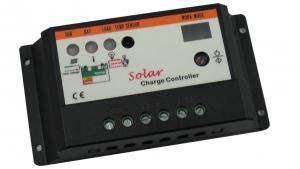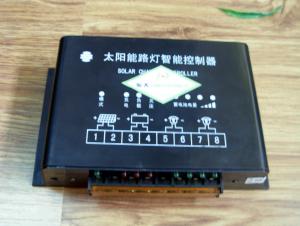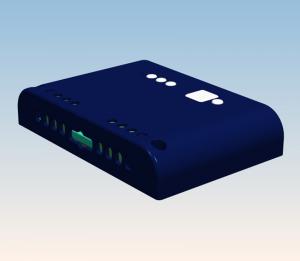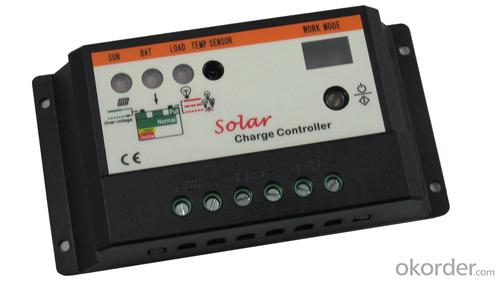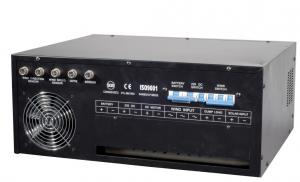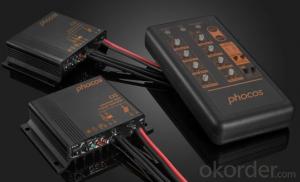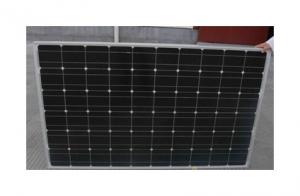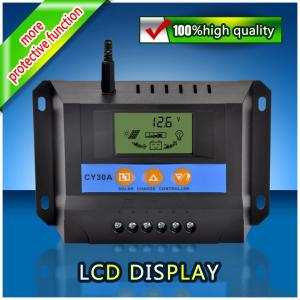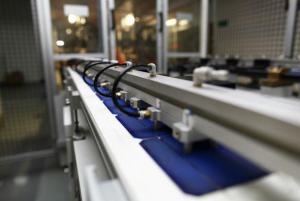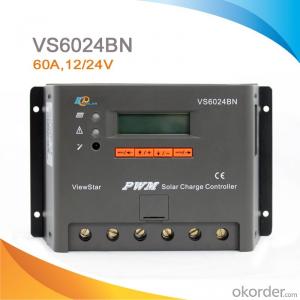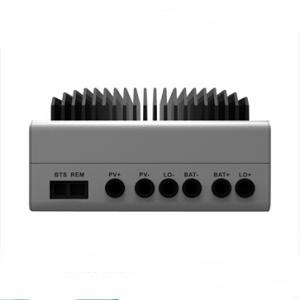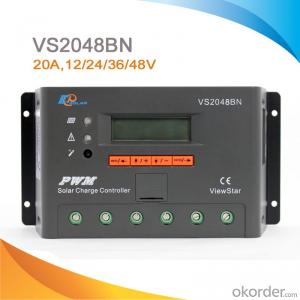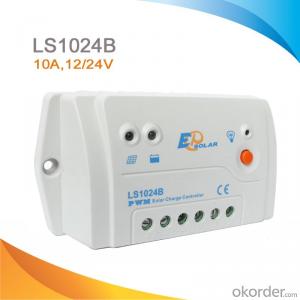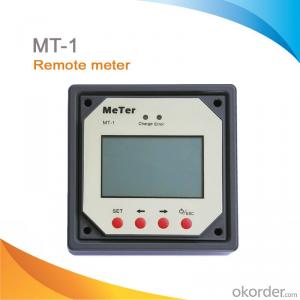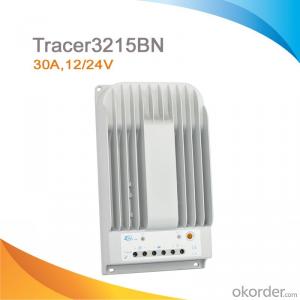P-Series PV Controller for Solar Electric Fence Controllers
- Loading Port:
- Nanjing
- Payment Terms:
- TT/LC
- Min Order Qty:
- 50sets set
- Supply Capability:
- 1-2000sets/month set/month
OKorder Service Pledge
OKorder Financial Service
You Might Also Like
Main features of P-Series PV controller:
Total positive control, multi-channel input matrix control of solar cells (for communication field)
Professional DSP control, charge and discharge point of each parameter can be set to meet the needs of different occasions
Brightest charge voltage detection with "bad back" control to prevent switching into oscillation state
Control circuit and main circuit completely isolated, with a high anti-interference ability
Protection function, operation status, fault LED indicate
LCD display screen, Chinese and English menu display
Clock display function
Variety of passive fault alarm output contact function
Historical records, password protection function
AH cumulative function of power (PV power generation, load power consumption ,battery power and other cumulative functions)
Low-power display state, further reducing its loss
Enables parallel operation of multiple machines
Against reverse battery
Remote monitoring (optional)
Optional Configuration of P- Series PV controller:
RS485/RS232 Remote monitoring;
Increase output control;
Technical Data of P-Series PV controller:
Voltage | 48V | 96V | 110V | 220V | 440V |
Rated current range | 100A~400A | 100A~500A | 100A~800A | ||
Battery input | |||||
Rated input -voltage (VDC) | 48 | 96 | 110 | 220 | 440 |
Under-voltage protection (VDC) | ≤43.2 | ≤86.4 | ≤99.0 | ≤198.0 | ≤388.0 |
Recovery voltage (VDC) | ≥49.2 | ≥98.4 | ≥115.0 | ≥230.0 | ≥460.0 |
Overvoltage protection (VDC) | ≥66.0 | ≥132.0 | ≥150.0 | ≥290.0 | ≥594.0 |
Overvoltage recovery (VDC) | ≤62.0 | ≤124.0 | ≤142.0 | ≤275.0 | ≤560.0 |
Solar input | |||||
Max. open circuit voltage(VDC) | 100.0 | 230.0 | 230.0 | 450.0 | 900.0 |
Max. charge current (A) | 400 | 400 | 500 | 500 | 800 |
Allow PV array points (N) | 10 | 12 | 20 | ||
Float voltage (VDC) | 54.8 | 109.6 | 125.0 | 251.0 | 493.2 |
Overcharge protection voltage (VDC) | ≥57.6 | ≥115.2 | ≥132.0 | ≥264.0 | ≥518.4 |
Charge recovery voltage (VDC) | ≤52.8 | ≤105.6 | ≤121.0 | ≤242.0 | ≤558.0 |
DC output | |||||
Max. output current (A) | 400 | 500 | 800 | ||
Overload capacity | 120% overload 60 seconds off the output / 150% overload for 10 seconds to close the output | ||||
Protection function | Battery over charge, over discharge the battery, the battery reversed,solar cells reversed , counter-attack by night charge , overheating, output overload, output short circuit | ||||
Serial communication | RS485(A、B) | ||||
Mechanical dimensions, work environment | |||||
Size (D x W x H) | 650 x 800 x 2260 | ||||
Reference weight (Kg) | 50 | ||||
Protection level | IP41 | ||||
Max. working altitude (m) | ≤3000 | ||||
Temperature range (℃) | -20 ~ +65 | ||||
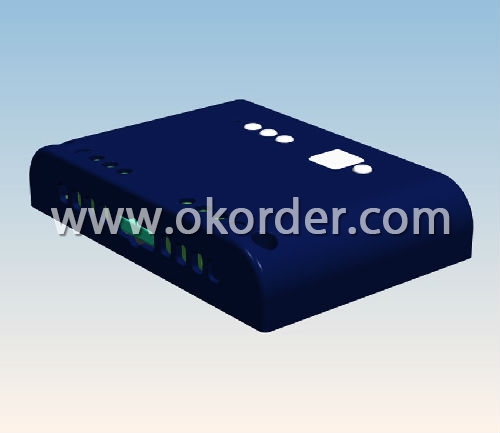
P-Series PV controller
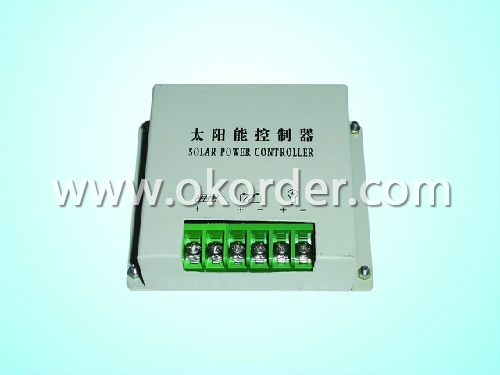
P-Series PV controller
Packaging & Delivery of P-Series PV controller
Packaging : Wooden box or Customized
Delivery: Depends on the quantity or Customized
- Q: What is the purpose of the equalization mode on a solar controller?
- The purpose of utilizing the equalization mode on a solar controller is to effectively uphold the well-being and functionality of the batteries connected to the solar system. Typically, this mode is employed for flooded lead-acid batteries, which are commonly utilized in off-grid solar systems. Over a period of time, chemical reactions taking place inside the batteries can lead to an uneven distribution of the electrolyte and the formation of sulfation. Sulfation refers to the accumulation of lead sulfate crystals on the battery plates. These issues have the potential to diminish the battery's capacity and overall performance. The equalization mode incorporated into a solar controller is ingeniously designed to counteract these problems by deliberately applying a controlled overcharge to the batteries. This intentional overcharge assists in redistributing the electrolyte and disintegrating the lead sulfate crystals, ultimately enhancing the battery's performance and prolonging its lifespan. During the equalization mode, the solar controller heightens the charging voltage to approximately 15 volts for a specific duration, generally a few hours. This elevated voltage and extended charging period enable the batteries to attain a state of complete charge and undergo the necessary chemical reactions to renew their capacity. It is crucial to bear in mind that not all solar controllers possess an equalization mode, and it should only be employed with batteries that are recommended for equalization. It is also of utmost importance to meticulously adhere to the manufacturer's guidelines and safety precautions when utilizing this mode. In conclusion, the equalization mode found on a solar controller is employed to effectively preserve the condition and operation of flooded lead-acid batteries by redistributing the electrolyte and disintegrating lead sulfate crystals. This process has the potential to enhance the battery's capacity, prolong its lifespan, and guarantee the optimal performance of the solar system.
- Q: Can a solar controller be used with a solar-powered restaurant or cafe?
- Yes, a solar controller can definitely be used with a solar-powered restaurant or cafe. A solar controller helps regulate and optimize the charging and discharging of batteries in a solar power system. It ensures that the solar panels are efficiently converting sunlight into electricity and that the batteries are properly charged and protected. This is crucial for a solar-powered restaurant or cafe as it allows for a reliable and sustainable energy source to power various electrical appliances and equipment, reducing dependence on the grid and minimizing operating costs.
- Q: What is the efficiency of a solar controller?
- The efficiency of a solar controller refers to its ability to convert and transfer solar energy from the solar panels to the connected battery or load. It is typically measured as a percentage and indicates how effectively the controller can capture and utilize the available solar power. Higher efficiency ratings indicate that the controller can maximize energy conversion and minimize energy losses, resulting in more effective solar energy utilization.
- Q: What is the purpose of the battery temperature compensation feature on a solar controller?
- The purpose of the battery temperature compensation feature on a solar controller is to ensure the optimal charging and discharging of the batteries regardless of the surrounding temperature. This feature adjusts the charging voltage based on the battery's temperature, preventing overcharging in high temperatures and ensuring sufficient charging in low temperatures. By maintaining the correct charging voltage, the battery temperature compensation feature helps prolong the battery's lifespan and improves overall system efficiency.
- Q: Can a solar controller be used in off-grid solar systems?
- Yes, a solar controller can be used in off-grid solar systems. In fact, it is an essential component of any off-grid solar system. A solar controller, also known as a charge controller, regulates the amount of charge going into the battery bank from the solar panels. It prevents overcharging of the batteries during periods of high solar input and protects the batteries from being completely drained during periods of low solar input. This helps to prolong the lifespan of the batteries and ensures their optimal performance. Additionally, solar controllers often have additional features such as load control and monitoring capabilities, making them an integral part of off-grid solar systems.
- Q: Can a solar controller be used in a solar-powered electric motorbike racing system?
- Yes, a solar controller can be used in a solar-powered electric motorbike racing system. A solar controller is responsible for regulating the charging and discharging of batteries in a solar power system, ensuring optimum performance and protection. In a solar-powered electric motorbike racing system, the solar controller would manage the charging of the batteries using solar energy, allowing the motorbike to be powered by renewable energy sources.
- Q: What is the maximum load power that a solar controller can handle?
- The maximum load power that a solar controller can handle depends on the specific model and capacity of the controller. It can range from a few hundred watts to several thousand watts. It is important to consult the manufacturer's specifications or consult with a professional to determine the exact maximum load power for a particular solar controller.
- Q: How does a solar controller handle battery over-temperature disconnect recovery?
- In order to regulate the charging and discharging of batteries in a solar power system, a solar controller is specifically designed. The protection of the batteries from potential damage during battery over-temperature disconnect recovery is a crucial role played by the solar controller. In the event that the battery temperature exceeds the limit, the solar controller detects the excessive heat and triggers a safety mechanism to disconnect the battery from the charging source. This action is taken to prevent further heating and protect the battery from potential damage. After the disconnection of the battery, the solar controller continuously monitors the battery temperature. It waits for the temperature to decrease to a safe level before commencing the recovery process. The recovery process involves reconnecting the battery to the charging source and resuming the charging procedure. Throughout the recovery process, the solar controller closely observes the battery temperature to ensure that it remains within a safe range. If the temperature starts to rise again, the controller will immediately disconnect the battery again to prevent any additional damage. Moreover, advanced solar controllers may have additional safety features, such as temperature sensors or thermal protection circuits. These features provide an extra layer of protection by actively monitoring the battery temperature and taking appropriate actions to prevent over-temperature conditions. In summary, a solar controller effectively manages battery over-temperature disconnect recovery by detecting excessive heat, disconnecting the battery from the charging source, monitoring the temperature, and commencing the recovery process once the temperature reaches a safe level. By doing so, it safeguards the batteries from overheating and potential damage, thereby maximizing their lifespan and performance in a solar power system.
- Q: How does a solar controller handle variations in ambient light conditions?
- The purpose of a solar controller is to regulate and optimize the charging process of a solar panel system according to the surrounding light conditions. By utilizing advanced technology and algorithms, it efficiently manages fluctuations in light intensity and adapts the charging parameters accordingly. Monitoring the voltage and current produced by the solar panels is one of the main tasks of a solar controller. When there is ample sunlight, the controller recognizes higher voltage and current levels, indicating ideal charging conditions. Consequently, it adjusts the charging parameters to enable maximum power transfer from the panels to the battery, ensuring efficient charging. However, the solar controller must adapt as the ambient light conditions change to maintain optimal system performance. In low light situations, such as cloudy or overcast days, the controller identifies a decrease in voltage and current. In these instances, it reduces the charging parameters to prevent overcharging the battery, which could potentially cause damage or decrease its lifespan. On the other hand, during periods of high light intensity, such as sunny days, the controller detects an increase in voltage and current. To prevent overloading the battery, it modifies the charging parameters to limit the amount of power transferred, guaranteeing safe and efficient charging. Moreover, a solar controller may also incorporate additional features like temperature compensation to handle variations in ambient temperature. Since temperature affects the charging process, the controller adjusts the charging parameters to compensate for temperature fluctuations and maintain optimal charging conditions. In conclusion, a solar controller effectively manages variations in ambient light conditions by continuously monitoring and adjusting the charging parameters based on the voltage and current produced by the solar panels. This ensures efficient operation of the solar panel system, maximizes power transfer, and safeguards the battery from overcharging or other potential issues.
- Q: How do I protect a solar controller from insects or pests?
- To protect a solar controller from insects or pests, you can start by regularly inspecting the area around the controller for any signs of infestation. Seal any gaps or cracks in the surrounding walls or structures to prevent entry points for insects. Additionally, consider installing a mesh or screen cover over the controller to create a physical barrier against pests while allowing proper ventilation. Regular cleaning and maintenance of the controller and its surroundings will also help deter insects from nesting or causing damage.
Send your message to us
P-Series PV Controller for Solar Electric Fence Controllers
- Loading Port:
- Nanjing
- Payment Terms:
- TT/LC
- Min Order Qty:
- 50sets set
- Supply Capability:
- 1-2000sets/month set/month
OKorder Service Pledge
OKorder Financial Service
Similar products
Hot products
Hot Searches
Related keywords
